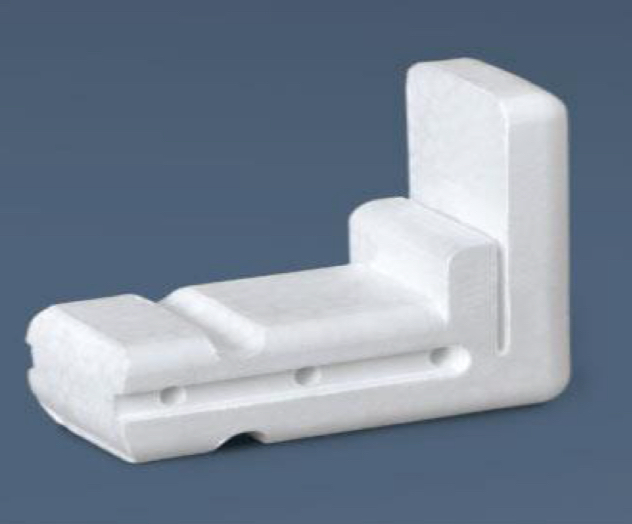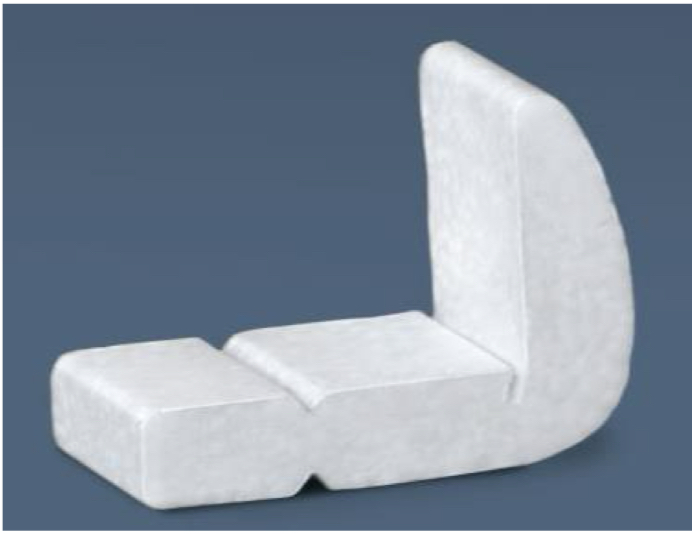Rad Theory W3
1/47
Earn XP
Description and Tags
Chapters 7, 8, 17, 18, 19
Name | Mastery | Learn | Test | Matching | Spaced |
|---|
No study sessions yet.
48 Terms
Intra-oral x-ray machines
used to expose intra-oral films
placed inside client’s mouth
Extra-oral x-ray machines
expose extra-oral films
placed outside client’s mouth
Components of an X-ray machine
Tubehead (PID)
Extension arm
Control panel
Control panel
allows radiographer to regulate the x-ray beam
Rinn XCP & BAI Holders
beam alignment devices

XCP bite block

Stabe bite block (disposable)
Extension Cone Paralleling (XCP) Holders
3 in 1 ring
used for paralleling technique
Bisecting Angle Instruments (BAI)
used for the Bisecting Technique
Collimating device
reduces amount of radiation a patient receievs
Unit-bite
universal film holder
can be used with bitewing or paralleling technique
Endoray Film Holder
used during endodontic procedures
Eezee-grip film holder
used in Bisecting technique
double ended
for anterior and posterior
Intraoral sensor
use for paralleling technique
indirect digital radiography
uses phosphor plates that are first exposed then digitally scanned

direct digital imaging
connects direct to the computer via USB, provides an immediate image
Charge coupled device (CCD) sensor
most common image receptor for dental digital radiography
Storage phosphor imaging
records data on plates and uses a scanner to convert into electronic files
what we use!
Pixel
smallest individuual unit of the radiographic image
A digital image is formed from?
a matrix of pixels
Quality assurance
making sure everything is good
Fresh film is?
Clear with a slight blue tint
Expired film is?
fogged
Screens film contact test
image should be uniform density
Viewbox
illuminator; emits a uniform and subdued light when functioning properly
Darkroom
light leak test
coin test
If the density on the standard radiograph matches the density seen on the daily radiograph, the developer solution is?
adequate
Which step on the stepwedge to use for comparison
middle density
Quality administriation programs include:
description of the plan and assignment of duties
monitoring and maintainence schedule
record keeping log of all quality control tests
periodic evaluation and revision
in-service training
Periapical exam (PA)
used the examine the entire tooth (around the roots)
must show crown and root; 2-3 mm beyond root apex
paralleling or bisecting technique
Interproximal examination
bitewings
must show open contacts; no overlapping
can be used to identify inter proximal caries and the bone level
Occlusal examination
occlusal radiographic technique
bite down on occlusal film
Complete Mouth Radiographic Series
aka Full Mouth Series (FMS)
Extraoral Radiographic Exam
panoramic and cephalometric radiograph
inspect large areas of the cranium or jaws
3 Basic Principles of the Paralleling Technique
film & long axis of tooth are parallel
central ray perpendicular to the film and tooth
film holder must be used to keep film parallel to long axis of tooth
(an increased target film distance is required (16 inches) to reduce magnification)
To acheive parallelism between the film and the tooth, the film must be placed?
away from the tooth and towards the midline of the oral cavity
Increase OFD =
Increase Magnification / Decrease Detail
Increase TFD =
Decreased Magnification / Increased Detail
What size film for posterior PAs?
size 2 for adults; size 1 for children
Vertical angulation
central ray must be directed perpendicular to the film
Horizontal angulation
central ray to be directed through the contact areas between the teeth
Patient prep for paralleling technique
“inform before you perform”
prepare films and holding devices
adjust chair upright and to proper height
adjust patient head parallel to floor
protect patient with lead apron and thyroid collar
remove superimposed objects (glasses)
FMS
Full mouth survey
Cotton rolls can be used?
to compensate for vertical angulation (parallelism)
Torus
bony growth
If a patient has a maxillary torus..
place film on opposite side of palatal torus
If a patient has a mandibular torus..
place film between torus and tongue, making sure it doesn’t rest on top of torus
Advantages of paralleling technique
lack of distortion → max detail and definition
simple and easy to learn
easy to standardize → accurately duplicate